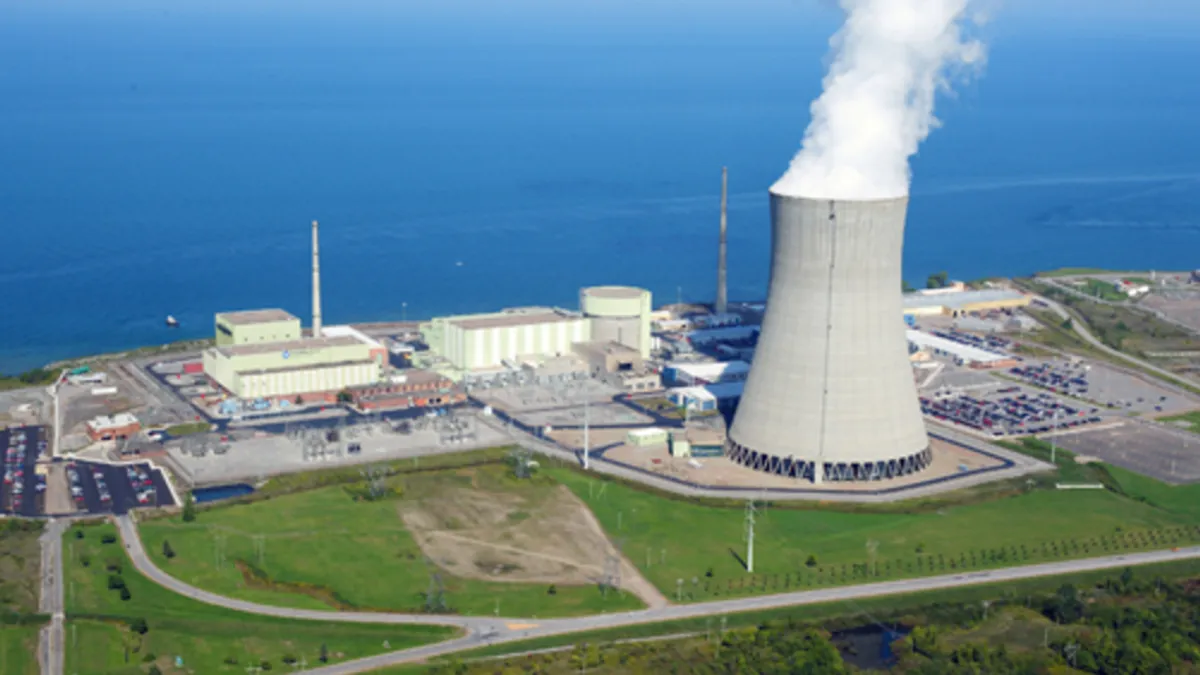Dive Brief:
- The independent market monitor for PJM Interconnection released an annual report March 8 concluding wholesale capacity and energy markets were competitive in 2017. Energy prices rose compared to 2016 on higher fuel costs, while capacity prices were generally lower.
- Monitoring Analytics LLC said its analysis showed some forms of new generation would have been profitable in at least part of the PJM market last year while others, including coal and nuclear, would have lost money.
- Energy uplift charges decreased by 5.5%, from about $137 million in 2016 to $129 million in 2017. Total payments for demand response programs decreased by 23%, to $502.6 million in 2017.
Dive Insight:
While there's been a lot of talk about increasing support for existing coal and nuclear plants, there are no plans to build such generation in the Northeast or Mid-Atlantic. And if it had come online last year, it would have lost money, according to the latest annual report from PJM's market monitor.
Last year, a new combined cycle gas plant would have been profitable in 11 of 20 zones in the market. On the other hand, Marketing Analytics noted that a new combustion turbine, coal plant or nuclear facility "would have been significantly unprofitable."
Assessing the market overall, Marketing Analytics found that energy prices rose last year in the PJM region, but were still pretty low overall compared to historical levels since wholesale trading began.
In PJM, the load-weighted average real-time locational marginal price was 6% higher in 2017 than in 2016, $30.99/MWh versus $29.23/MWh. But, real-time load-weighted energy market prices were lower in 2017 "than in all but two other years in PJM history since the beginning of the competitive wholesale market on April 1, 1999," Marketing Analytics noted.
"Energy prices in PJM in 2017 were set, on average, by units operating at, or close to, their short run marginal costs, although this was not always the case," the firm said. "This is evidence of generally competitive behavior and resulted in a competitive energy market outcome."
The market may be working, but PJM is still considering changes in both energy and capacity markets in an attempt to minimize uplift charges. Regulators have expressed skepticism about some proposals, saying the energy market plan in particular would fundamentally alter price formation.
Last year, PJM proposed changes to its energy market price formation that would allow large, inflexible generators such as coal, nuclear and large gas generators to set prices, likely raising energy prices across the operator's territory.
PJM serves 13 states and the District of Columbia in the Mid-Atlantic and Northeast. It was the second market this week to report that it's functioning well.
Analysis from the New England ISO found real-time wholesale power prices in New England averaged $33.94/MWh last year, and the total value of the market reached $4.5 billion — 9% higher than the record low, set in 2016.














